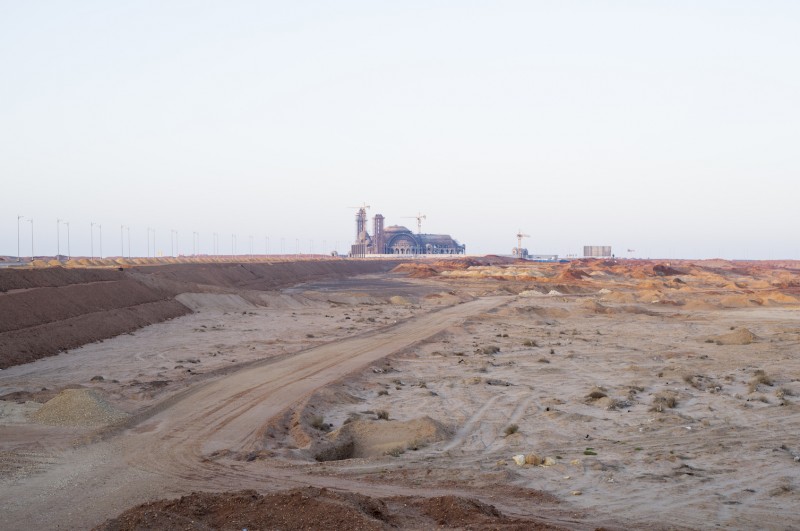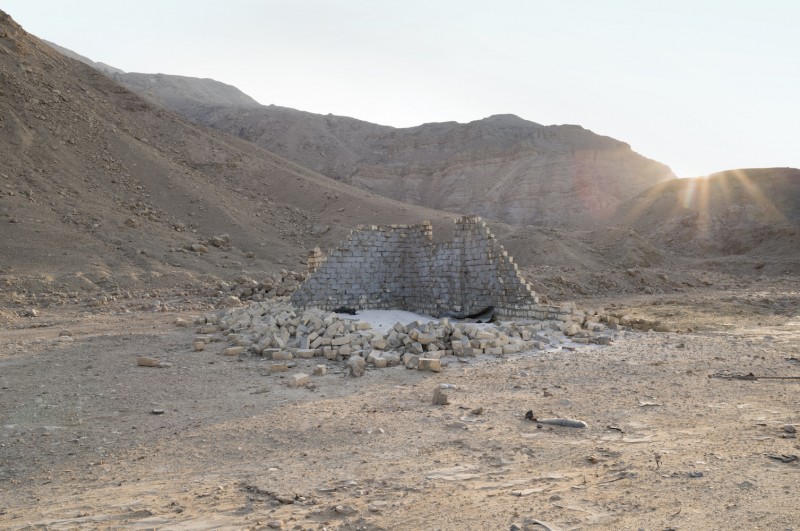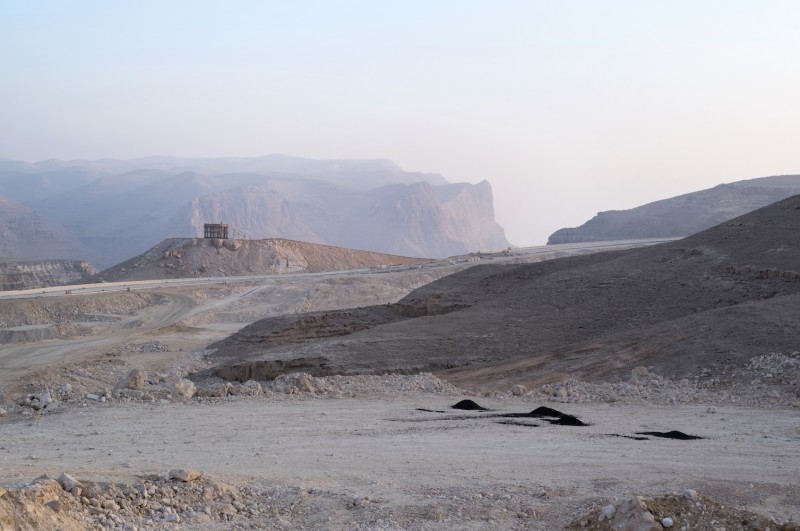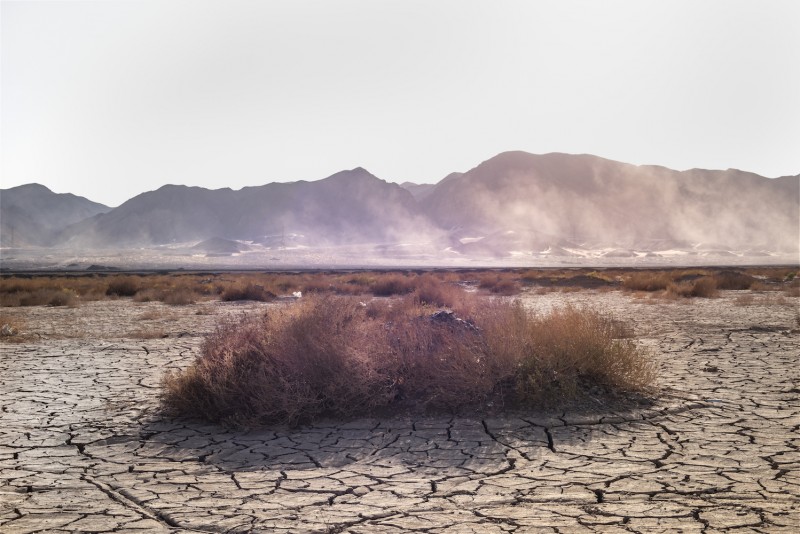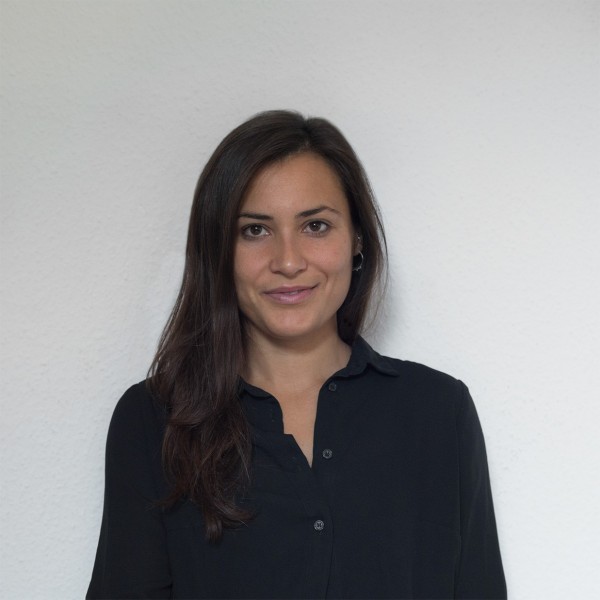Changing Landscape
Changing Landscape
Barbara Rossi
January 8, 2019
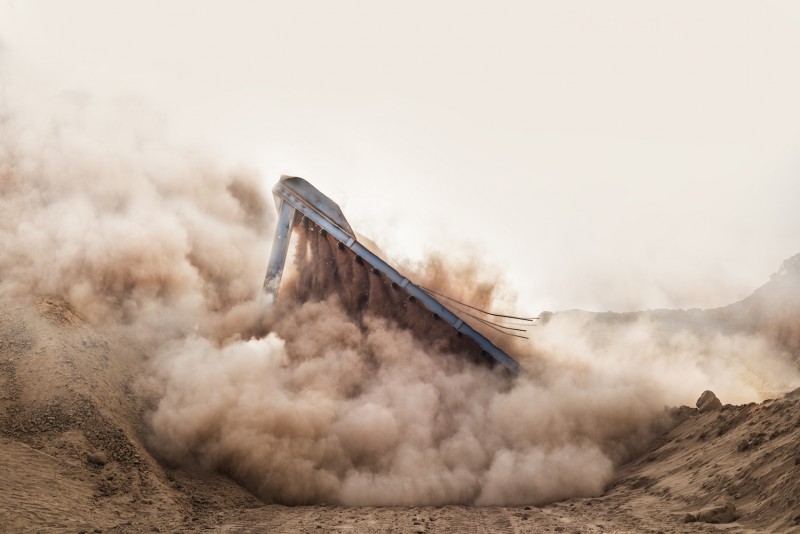
Barbara Rossi: I first discovered Egypt during the photographic documentation of a deserted area in 2015. Italian architects were planning to build a new city in the desert and I immediately became interested in this phenomenon, which was already spreading all along the Red Sea Coast. Once there, I was stricken by the beauty of this land. On the one hand lay clear evidence of both the past and present civilisations, while, on the other, there was the desert, with its inner rules and emptiness. What sparked my imagination the most, however, was the fact that this new city was meant to be erected along an ancient Roman road, the Via Hadriana Nova, in a country where architecture has always had an ideological quality.
Geography - as a subject - holds a special place in my imagination: atlases and maps allow me to explore the cultural stratification of areas and routes that I can pin-point on physical maps. Once in Egypt, everything came together, and I began a series of trips to develop my project, which came to a close this past August.
What exactly is being built or destroyed along the Red Sea coast? What is the idea behind these construction projects?
Since the 1990s, investment in the production of private elitist cities or private economic territories in Egypt was presented as a solution to address the important challenges faced due to the population growth and the necessity of economic development. The investment was important and the transformations of the cities sometimes major: the private cities mushrooming at the fringes of the desert are among the driving forces. However, creating new towns is an expensive endeavour, since all the basic infrastructure must be provided from scratch In some cases, the development of up-market sites without regard for market demands lead to the failure of many such schemes. Because of that, along the coast you can find the skeletons of buildings where construction was interrupted.
Nonetheless, the effort to gain ground against the desert has not ceased: billboards promising another way of life have long clustered the roadsides of Cairo’s ring highways. Advertisements for gated housing developments promise “360-degree greenery” and open spaces. One sign, located on a busy and polluted central road, invites onlookers to “just breathe”.
Why did people choose to out up buildings in those deserted areas?
For most people, deserts are merely regions to be crossed, places with transit routes that have to be negotiated both politically and environmentally. We need to remember, however, that Egypt is predominantly desert, and that architecture in African countries has always dealt with the harshness of the landscape. Nowadays the government itself is building a new capital city in the desert, in order to face the challenges of an overpopulated Cairo.Ancient Egyptians divided their country into two types of land: the red land, which meant desert, and the black land, which was the fertile Nile Valley region.
The Eastern Desert – also known as the Arabian Desert –, which I travelled, sits just east of the Nile River Valley, extending toward the Red Sea. This land in between is just as arid as the west, but features beautiful mountains facing the Red Sea. Numerous resorts have been built between the coastal road, which runs from Sudan via Suez to Israel, and the Red Sea with its coral reefs. With the passing of time, these resort areas became cities themselves, hosting employees and their families first, and becoming authentic communities of tourists, retirees and people who simply wish to live close to the sea. However, for some reasons, this scheme wasn’t 100% successful, and the construction of some sites was interrupted. What remains now are skeletons. Eventually the desert will take them back; they'll disappear, eroded by the sand and the wind.
Where did you find differences and/or similarities between the cultural and the natural landscapes you explored?
My photographic investigation is based on the promises of a link between man, territory and time. With Changing Landscape I wanted to focus specifically on the coexistence between the natural landscape - the desert and its apparent immobility - and the built-up environment - with its chaos, gaps and iterations. What I found was a kind of balance between these two worlds, a higher order: what the ancient Egyptians called Maat.
We are told that in ancient Egypt the pursuit of Maat and stability proceeded from a constantly changing universe, where natural events (such as the flow of the river, the wind of the desert) would change the features of the territory and have a lasting impact on the life of the inhabitants. Indeed, the hills and the routes of the desert – always changing and uncontrollable - were considered numinous places where the simple man could catch a glimpse of the divine. In this environment, architecture was a medium to connect the terrestrial with the universe and the gods who ruled it. Modern Egypt is driven by a different logic and, with Changing Landscape, I preferred not to speak of the differences and similarities between the natural and cultural landscapes, but rather to focus on the inner lives of this landscape and to foster reflections on the nature of public space in our times.
How long did your project take and what were the biggest difficulties?
The realization of the project took approximately two year. During that period of time, I travelled to Egypt at different times and seasons, including Ramadan and the dry summer season. The biggest challenge was in gaining permissions to take pictures in restricted areas, such as construction sites or private cities. In some cases I reached out to construction companies, real estate developers and resort managements, and gained access by offering up my services as an architecture photographer. I ended up taking photographs for them and myself, which proved to be a very successful and engaging strategy. Another difficulty was the fact that many areas along the Red Sea coast are under military control, or simply private areas where I didn't have any previous contact. As I don’t speak any Arabic I relied on the precious help of my Egyptian friend Alaa. He was able to deal with the locals who, in most cases, proved to be very welcoming. They not only allowed me to take photographs, but in most cases we ended up drinking tea together afterwards.
Barbara Rossi+-
Italian photographer Barbara Rossi (1988) received a Bachelor’s of Fine Art from the Accademia di Belle Arti di Brera in Milan, and then a Master in Photography from the National Film School in Rome. Her work has been exhibited in group and solo exhibitions at the Triennale Milano, Festival di Fotografia Europea in Reggio Emilia, VV8 gallery, Les Rencontres d'Arles 2016, and the Egyptian Embassy in Rome. She has been published by Adda Editore, Wallpaper*, Der Greif and Domus web. She lives and works in Cologne, where she collaborates with Hans-Georg Esch. More

